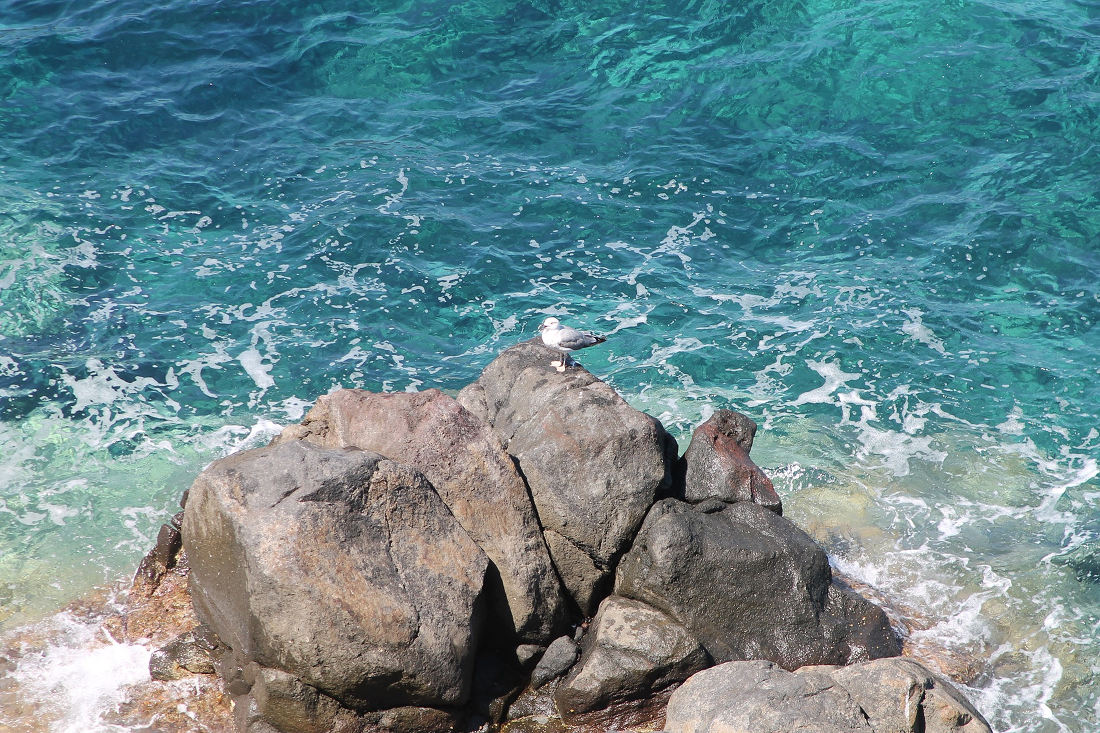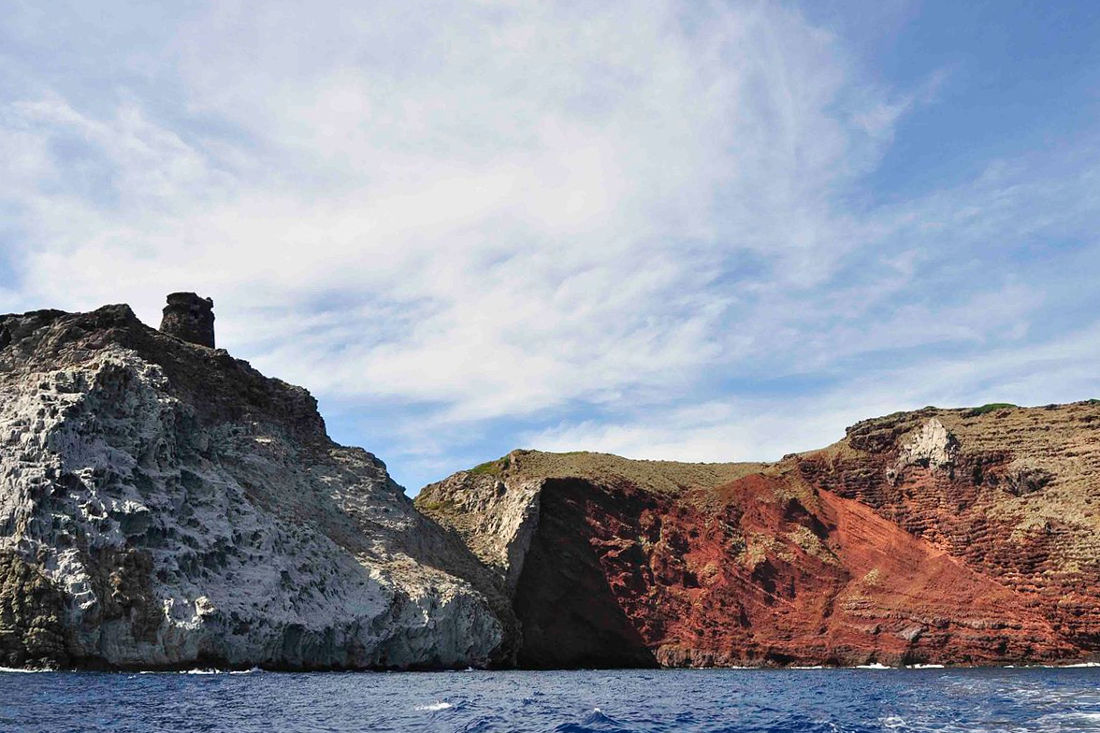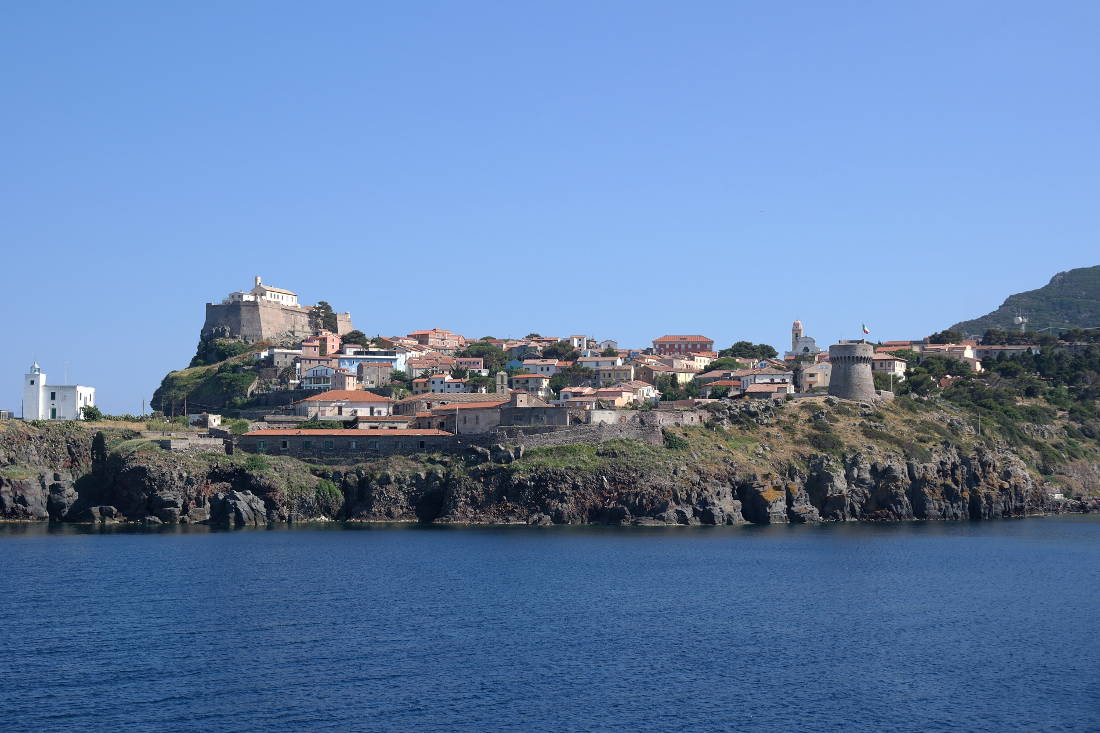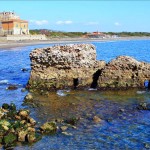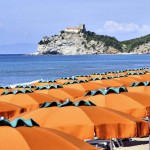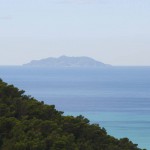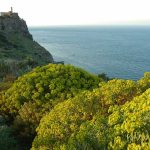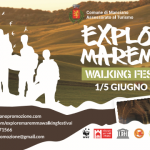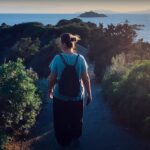09 Feb Capraia
Capraia, wild island
The island of Capraia is the third biggest of the Tuscan Archipelago, and is located northwest of Elba Islanda, 16 miles from Corsica and 36 miles from Livorno.
Capraia is an island of volcanic origin with the volcanic cone still well visible in the wonderful Cala Rossa. An extraordinary spectacle of sculpture by the eriosion of lava, the wind and the sea: steeply sloped coasts, rocks of vibrant colors and intense contrasts. Inland are narrow valleys faced by small mountains.
In spring before docking you can smell the island from a distance before welcoming you with a rich and varied vegetation where you can admire species endemic or common only to the Tuscan archipelago.
The only inhabited places are the tourist port and the town on the mountain, characteristic for its descending alleys from the San Rocco fort to Faro of Punta Ferraione.
There’s only one paved road that connects the port to the town and one panoramic road of napoleonic origin traversable only on foot. The paths lead through all of the uninhabited part of Capraia and allow for long walks, where you’ll be immersed in the mediterranean vegetation that reigns supreme on the whole island, admire dozens of species of birds, families of wild rabbits and on the highlands also the friendly mouflons.
A treasure of the Natural Park of the Tuscan Archipelago
The part of the island that faces east, towards the Continente, offers a spectacle of coves overlooked by old watchtowers dating back to the Republic of Pisa, built to discourage the landing of Saracen pirates. Degrading coastlines offer the possibility to go swimming also in shallow waters, sometimes crystal clear with sandy bottoms: Cala dello Zurletto, Cala del Ceppo, lo Scoglione.
The part of the south coast of the island is unforgettable: Cala Rossa, ancient volcanic cone, collapsed on one side, enchants with its intensity of colors and contrasts and Punta dello Zenobito, with its majesctic tower positioned on top of the lava rock offers a unique and inimitable panorama.
Cala del Vetriolo and Cala del Cavallo in the part looking west, with Corsica on the horizon, give a majestic spectacle of cliffs overhanging the sea.
The sea is the true treasure of the island of Capraia: clear and clean waters with an extraordinary diversity in unpolluted depths that are home to many species of fish, shellfish, crustaceans: a paradise for those who want to dive, snorkel or enjoy the island from a boat.
Capraia through history
It was Aigylion to the Greeks and Capraria to the Romans, so named for the presence of wild goats in the area. It was a landing place for the Etruscans, a roman naval base to fight Carthaginian piracy, seat of community of monks fleeing from the oppression of Christians, treasure to the Saracens, and then in the orbit of Genoa.
Forte San Giorgio and the various towers on the island bear witness to control by the Republic of Pisa in the 16th century.
For its strategic position it was still strongly disputed over the course of the centuries among Corsica, the Republic of Pisa, and France, until the Congress of Vienna assigned it to the Kingdom of Sardegna. It was home to a penal colony and place of confinement during fascism.
Flavors of Capraia
The restaurants on the island offer tastes of a varied and genuine cuisine mostly based on fresh fish.
At the Azienda Biologica Valle di Portovecchio, the ex penal colony, you can try the specialty of the island: honey of a very unique taste, the goats cheeses of top quality, the Mirto, the Finocchietto and the Nocino and the preserves made with natural methods.
How to get to Capraia
Connections to Capraia are managed by the Compagnia Toremar with starting point the Porto Mediceo of Livorno.


 BEACHES AND SEA
BEACHES AND SEA VILLAGES AND TOWNS
VILLAGES AND TOWNS PARKS AND RESERVES
PARKS AND RESERVES TUSCANY ISLANDS
TUSCANY ISLANDS MUSEUMS AND ATTRACTIONS
MUSEUMS AND ATTRACTIONS TERMS AND RELAX
TERMS AND RELAX SPORTS AND ACTIVITIES
SPORTS AND ACTIVITIES WINE TESTING
WINE TESTING


